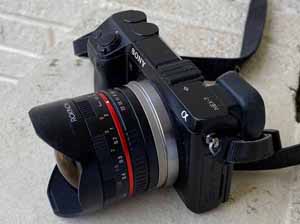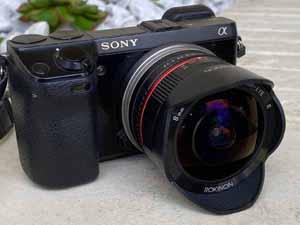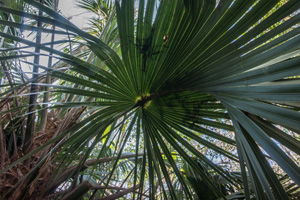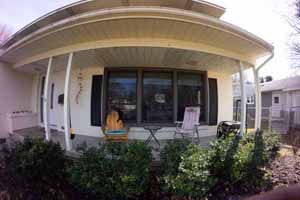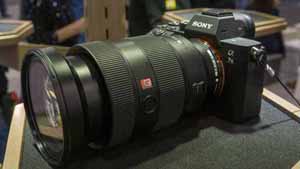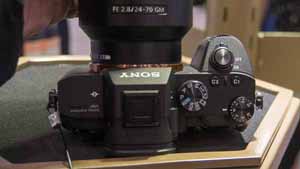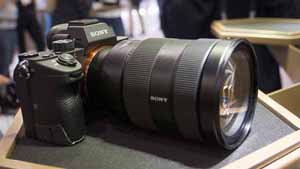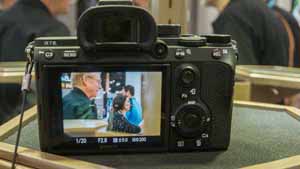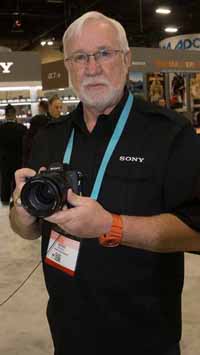Online Magazine
Recent Posts
- Safeguard your Cellphone Photos
- Black & White to Color – Instantly
- Wearing Many Hats
- Video Roundup
- Rescuing Your Blurry Pictures
- Showing Their Age
- What is Your Angle?
- Panorama Photos
- Humorous Photos
- Close Ups
- Fisheye Pictures
- Photo Antiquities
- Printing Big
- Appreciating Scale
- Celebrity Sightings
Tags
More Places to Go
- Free "How-To" Books “How To” books for popular cameras 0
- Vist Us on Facebook keep in touch with us on Facebook 2
Archives
- July 2023 (1)
- March 2023 (2)
- February 2023 (1)
- December 2022 (1)
- October 2022 (1)
- September 2022 (8)
- August 2022 (9)
- July 2022 (1)
- June 2022 (1)
- June 2021 (1)
- May 2021 (1)
- March 2021 (5)
- February 2021 (4)
- January 2021 (2)
- April 2019 (1)
- March 2019 (1)
- February 2019 (1)
- October 2018 (2)
- April 2018 (1)
- March 2018 (4)
- February 2018 (1)
- November 2017 (1)
- August 2017 (1)
- June 2017 (1)
- April 2017 (1)
- March 2017 (5)
- February 2017 (2)
- January 2017 (1)
- October 2016 (1)
- September 2016 (1)
- August 2016 (1)
- July 2016 (1)
- May 2016 (1)
- April 2016 (1)
- March 2016 (2)
- February 2016 (1)
- January 2016 (2)
- December 2015 (1)
- November 2015 (1)
- October 2015 (3)
- April 2015 (1)
- March 2015 (5)
- February 2015 (1)
- January 2015 (4)
- December 2014 (2)
- November 2014 (5)
- October 2014 (2)
- September 2014 (1)
- August 2014 (2)
- July 2014 (1)
- May 2014 (1)
- April 2014 (5)
- March 2014 (5)
- December 2013 (2)
- November 2013 (18)
- October 2013 (1)
- September 2013 (1)
- August 2013 (1)
- July 2013 (1)
- June 2013 (3)
- May 2013 (1)
- April 2013 (2)
- March 2013 (1)
- February 2013 (1)
- January 2013 (1)
- December 2012 (1)
- November 2012 (2)
- October 2012 (2)
- September 2012 (5)
- August 2012 (2)
- July 2012 (1)
- June 2012 (1)
- May 2012 (1)
- April 2012 (4)
- March 2012 (1)
- February 2012 (1)
- January 2012 (3)
- December 2011 (1)
- November 2011 (3)
- October 2011 (1)
- September 2011 (2)
- August 2011 (2)
- June 2011 (3)
- May 2011 (4)
- April 2011 (8)
- March 2011 (8)
- February 2011 (10)
- January 2011 (6)
- December 2010 (11)
- November 2010 (14)
- October 2010 (6)
- September 2010 (12)
- August 2010 (2)
- July 2010 (4)
- June 2010 (3)
- May 2010 (1)
- April 2010 (1)
- March 2010 (2)
- February 2010 (1)
- January 2010 (1)
- December 2009 (1)
- November 2009 (2)
- October 2009 (2)
- September 2009 (1)
- August 2009 (3)
- July 2009 (2)
- June 2009 (1)
- May 2009 (2)
- April 2009 (1)
- March 2009 (2)
- February 2009 (1)
- January 2009 (3)
Fisheye On The Cheap
14th March 2021
A few years ago I upgraded from a Sony NEX7 to the newer Alpha 6000.
The A6000 became my everyday walk around camera. But I didn’t want to let the NEX7 collect dust, nor did I want to spend a lot more investing in more glass.
The one drawback is that this lens is manual aperture control and manual focus but I decided that I could live with these limitations.
The compact size of this camera/lens combination makes it a great way to have a tag along camera and use it for the wide views without having to change lenses.
For many excursions, I carrythree cameras: this fisheye combo, a second with a long lens telephoto (80-400mm) for wildlife and a third with a medium zoom (24mm to 200mm) – all without breaking my back with the weight. In the case of the 8mm fisheye lens, I have a winner at a very decent price.
Having done a little looking around, I know that there are other inexpensive fisheye lenses available for all of the major brand cameras. If you too like the interesting effects that the come from the ultra curved lens surface you’ll be able to find a fisheye to add to your camera bag.
Sony Alpha 7 III
23rd March 2018
The Newest High Performance Mirrorless
The A7 III is on target for release about mid-April. The suggested price is $2200 with a 28-70mm lens. For more information and detailed specifications, please visit Sony A7 III.
For more information about the upcoming Sigma lenses, please visit Sigma.
After my hands-on test and after talking to the Sony rep David Rhodes, I’ve decided to pre-order the A7 III. The two features that pushed my decision are the speedy and more accurate autofocus, the 10 fps shooting capability and the availability of a larger selection of lenses. I look forward to its arrival – I’m told in a couple of weeks. Hopefully, I’ll have a review of the new equipment in the near future.
Note from April 10, 2018: I just received delivery of the A7 III that I preordered a couple of weeks ago. I hope to have a review shortly.
Written by: Arnie Lee
Consumer Electronics Show 2016
24th January 2016
All Things Techie
| The Consumer Electronics Show has been the face of the electronics industry for almost 50 years. Except for one year, I’ve attended the show continuously since 1980 first as an exhibitor for many years, next as an industry member and lately as part of the press.
CES is held each year in early January in Las Vegas. This makes traveling to CES a respite from the cold and snowy winter weather of my home base in Michigan. I walked many miles through the aisles and took in the breath of new gadgets that may make their way to our homes and businesses in the next months. |
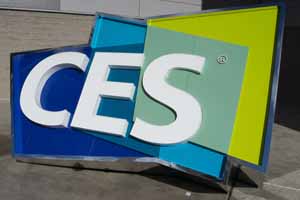 |
Along with 170,000 attendees, I was privy to see some 3,800 exhibitors that occupied 2.5 million square feet of floor space showing their products.
Here are a couple that caught my attention.
DXO One – iOS Camera |
||
| One of my first stops was at the DXO Labs booth where their rep Elodie Petiot demonstrated a small, standalone camera that melds seamlessly with the iPhone and iPad.
The DXO One has a high resolution 20MP sensor with a fast f/1.8 32mm equivalent lens and attaches directly to the iOS device through a Lighting connector thereby eliminating the need for a wifi connection. An iOS app provides control over all of the cameras’s features – focus, exposure, shutter speed, aperture setting, ISO setting, more. Captured images are immediately transferred to the iPhone for editing or sharing online. The suggested price for the DXO One is $475. For more information please visit DXO. |
||
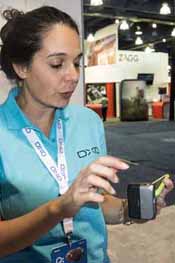 |
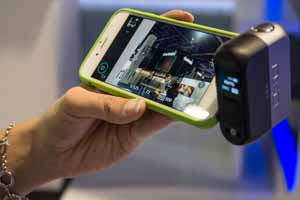 |
|
Sony Alpha 7R II Mirrorless |
||
| I’ve been using Sony APS-C mirrorless cameras for the past four years, but Sony’s new full-frame a7r II has been on my radar scope since it became available late last year. With a whopping 42-megapixel sensor it should fits into my fondness for landscape photography. Its BSI (back sided illuminated) sensor enables Sony to pack more light gathering power onboard, thereby boosting sensitivity to 102,400. Autofocus speed is said to be 40% faster than the earlier a7R model. Other improvements include five-axis image stabilization and shutter dampening for less camera vibration. | ||
| What’s holding me back from purchasing this camera? I’d also have to shell out a big investment for a set of full-frame lenses.
The suggested price of the a7R II is $3200. For more information, please visit Sony. |
 |
|
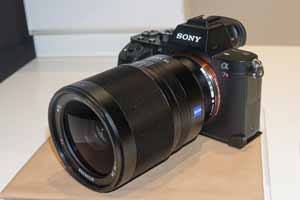 |
 |
|
|
|
||
Stay tuned for a look at a couple of 3D printers that caught my eye at CES 2016.
Written by: Arnie Lee

